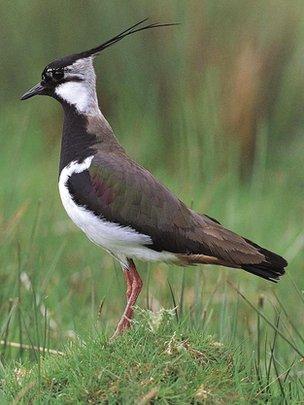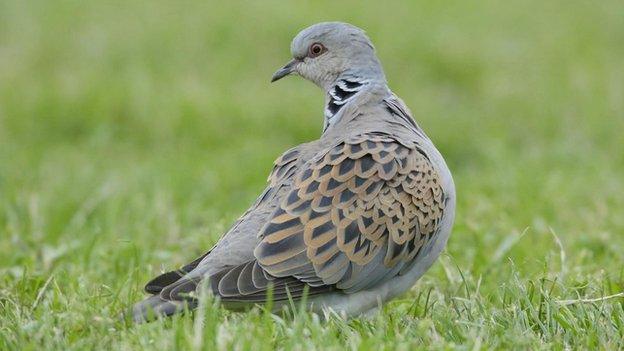Early results from farm bird count
- Published

Lapwings are among the rare birds sighted during the count
Early results from a major count of farmland birds reveal sightings of several rare species.
The farmers participating in the Big Farmland Bird Count recorded seeing 117 bird types, including 14 at-risk species.
These included the linnet, the yellowhammer, starling and lapwing.
The organisers expressed delight with the preliminary results, calling them "remarkable."
More than 2,000 farmers and gamekeepers have been taking part in the survey, which is organised by Game & Wildlife Conservation Trust (GWCT).
A downloaded tick sheet is taken in to a field for 30 minutes and any sightings are recorded. The spotting started on 7 February and will finish on the 15th.
According to the latest government figures, farmland birds are at their lowest levels since records began.
Numbers of birds such as grey partridge, turtle dove and starling are down more than 85% since the 1970s. Much of this decline has been blamed on modern intensive farming methods.
The GWCT believes the best way to help reverse the decline in farmland birds is not to criticise farmers, but to highlight the positive steps which growing numbers of them are taking to protect wildlife.
Jim Egan, head of development and training at the Trust said: "There has been an enormous sea-change in the way many farmers now manage their land to benefit wildlife and through the Big Farmland Bird Count, we wanted to give them an opportunity of show-casing what their conservation efforts deliver on the ground."
The idea is to "inspire envy" with farmers wanting to show off the most rare and the widest variety of species on their land.
Mr Egan said that the count provides an opportunity to "make [farmers] feel very proud of their achievements. In so doing, the hope is that they will want to do more. Once you get in to that cycle, you know you are winning".
A spokesperson for the RSPB told BBC News: "We are supportive of the Big Farmland Birdwatch, because it helps raise awareness of the birds using farms and farmland at this time of year.
"Farmers are crucial to ensuring these birds thrive. We think this project is a great help for the individual farmer to think about and hopefully put in place the habitats those species need all year round."
This is the second year that the count has been running. The final results will be announced next week.
Follow Claire on Twitter, external.
- Published23 October 2014
